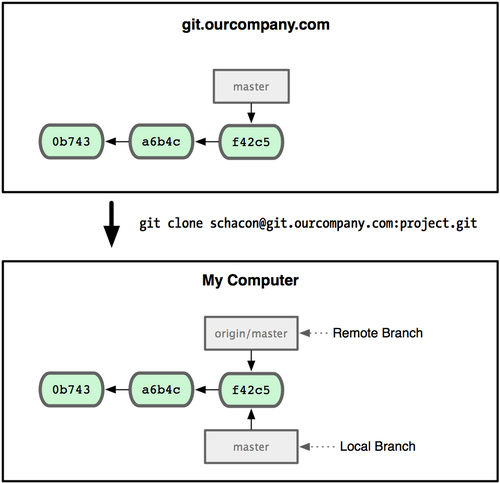
#Push a remote branch to remote master git code#
It’s useful to testing code that uses things like Mongo’s ObjectId. That’s great for setting functions as method mocks. The gist of fineProperty use with a function value boils down to:Ĭonst obj = console.log(obj.yes()) // false or true depending on the call :D As you can see, the yes property is not enumerated, but it does exist. non-enumerable properties that are functions.
#Push a remote branch to remote master git how to#
This post goes through how to use fineProperty to mock how constructors create methods, ie. #javascript JavaScript fineProperty for a function: create mock object instances in Jest or AVA Updates were rejected because the tip of your current branch is behind its remote counterpart. No rebase(s): merge the remote branch into local We’re now going to explore how to achieve a state in the local branch where the remote won’t reject the push. How can you get your local branch back to a state that’s pushable? These 2 cases should be dealt with differently. There tend to be 2 types of changes to the remote branch: someone added commits or someone modified the history of the branch (usually some sort of rebase). “the tip of your current branch is behind its remote counterpart” means that there have been changes on the remote branch that you don’t have locally. Remotes are useful to share your work or collaborate on a branch. a GitHub/GitLab/BitBucket/self-hosted Git server repository instance). A remote equates roughly to a place where you git repository is hosted (eg. A remote branch is one that exists on the remote location (most repositories usually have a remote called origin). A local branch is a branch that exists in your local version of the git repository. Git works with the concept of local and remote branches. I did fast-forward merges on remote with many branches, and when I ran git branch -merged locally, it didn't show me any merged branches.What causes ”tip of your current branch is behind”? The same might also happen is you do a fast-forward merged. In pull request cases where you do a different merge (for example, a squash merge), the branch history is altered and as a result git branch -merged will not show locally merged branches. and you see the local branch that was merged.normal merge the branch to the main branch on remote.This setup I've shared above only works well if "everything goes the normal way". The challenge with Squashed or Rebased Branches Git fetch would prune remote references that do not exist (if you added that to your config file), and the rest of the command deletes local branches that have been merged. You can track a remote branch with the following command:

When you create the same "header" branch on the remote repository, the local repository will not have any information about that branch until you tell the local branch to track it.


This file will contain all the commits you make on that branch. git directory will be created with the following path: refs/heads/header. When you create a local branch, say "header", a new file in the project.

How do you solve this? First, we need to understand how local and remote branches work together. Repeating this for many other branches leaves you with many outdated local branches. When you do this, you may forget to delete the local branch. On merging that branch, the branch becomes irrelevant, and GitHub, for example, gives you the option to delete the branch afterward. And when you're done with all the necessary changes for that branch, you would merge the branch to your production branch (like master). When you create a local branch, most of the time, you would push the changes in that branch to a branch of the same name in the remote repository. But, the more branches you have, the more difficult they are to manage. The idea of branches in git is a nice feature as it allows to work on separate parts of a project simultaneously.


 0 kommentar(er)
0 kommentar(er)
